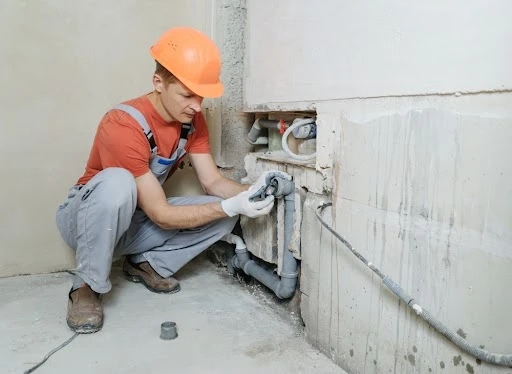Water damage can wreak havoc on homes and the environment. There are eco-friendly methods to mitigate its effects and restore affected areas. Here are some sustainable approaches for Water Damage Repair :
Water Extraction:Utilize energy-efficient pumps and vacuums to remove excess water from affected areas. These devices consume less electricity, reducing carbon emissions.Natural Drying Techniques:
Harness the power of sunlight and air circulation to dry out water-damaged spaces. Open windows and use fans to facilitate natural evaporation. It minimizes the need for energy-intensive drying equipment.Biodegradable Cleaning Products:
Opt for environmentally friendly cleaning solutions. It breaks down after use, avoiding pollution of water sources and minimizing ecological impact.Non-Toxic Mold Remediation:
Combat mold growth with non-toxic alternatives to traditional chemical-based treatments. Vinegar, hydrogen peroxide, and tea tree oil are effective, eco-friendly options.Recycled Building Materials:
When replacing damaged structures or materials, choose recycled or reclaimed options. Using salvaged wood, recycled insulation, and reclaimed bricks. This reduces demand for virgin resources and minimizes waste.Rainwater Harvesting Systems:
Install rainwater harvesting systems to collect and store rainwater for future use in irrigation. Flushing toilets, and other non-potable applications. This conserves municipal water supplies and reduces strain on ecosystems.Permeable Surfaces:
Replace impermeable surfaces like concrete with permeable alternatives. Such as gravel or permeable pavers. This allows rainwater to infiltrate the soil, replenishing groundwater and reducing runoff. It can contribute to flooding.Green Roof Installation:
Consider installing green roofs. Which consist of vegetation and soil layers atop conventional roofing materials. Green roofs absorb rainwater, provide insulation, and reduce the urban heat island. That effect while enhancing biodiversity.Native Landscaping:
Use native plants in landscaping to minimize water consumption and support local ecosystems. Native plants are adapted to the local climate. It requires less irrigation, reducing water usage and maintenance costs.Energy-Efficient Appliances:
Replace water-damaged appliances with energy-efficient models that consume less electricity and water. Look for appliances with the ENERGY STAR label, indicating superior energy performance.Proper Waste Disposal:
Dispose of water-damaged materials responsibly to prevent contamination of landfills and waterways. Separate salvageable items for recycling and ensure hazardous materials. These are disposed of according to regulations.Educational Outreach:
Educate homeowners and communities about the importance of water conservation and eco-friendly practices. Encourage sustainable behaviors such as fixing leaks promptly and using water-saving fixtures.Community Collaboration:
Foster partnerships with local organizations and government agencies. To implement community-wide water conservation initiatives. Collaborative efforts can amplify the impact of eco-friendly practices and promote resilience. Against future water-related challenges.Greywater Recycling Systems:
Install greywater recycling systems to reuse water from sinks, showers, and washing machines. For non-potable purposes like irrigation and toilet flushing. This reduces freshwater demand and minimizes wastewater discharge into the environment.Biofiltration Systems:
Incorporate biofiltration systems such as constructed wetlands and bioswales into landscape design. It filters and treats stormwater runoff. These systems remove pollutants and improve water quality. Before it reaches water bodies, benefiting aquatic ecosystems.Sustainable Land Use Planning:
Advocate for sustainable land use planning policies. It prioritizes green infrastructure, preserves natural waterways, and minimizes urban sprawl. Thoughtful land use planning helps prevent water damage. By preserving natural floodplains and reducing impervious surfaces.Carbon Offset Initiatives:
Offset the carbon footprint of water damage repair activities. By investing in carbon offset initiatives. Such as reforestation projects or renewable energy installations. This helps mitigate the environmental impact of restoration efforts. It contributes to climate change mitigation.Continuous Improvement:
Commit to ongoing research and development of innovative eco-friendly technologies. The practices for water damage repair. Embrace a culture of continuous improvement. To stay at the forefront of sustainability in the restoration industry.
In conclusion
By implementing these eco-friendly approaches to water damage repair. Homeowners and restoration professionals can minimize environmental harm. While restoring properties to their pre-damaged condition. Taking proactive steps to mitigate water damage repair. Also adopting sustainable practices contributes to a healthier planet for future generations.


